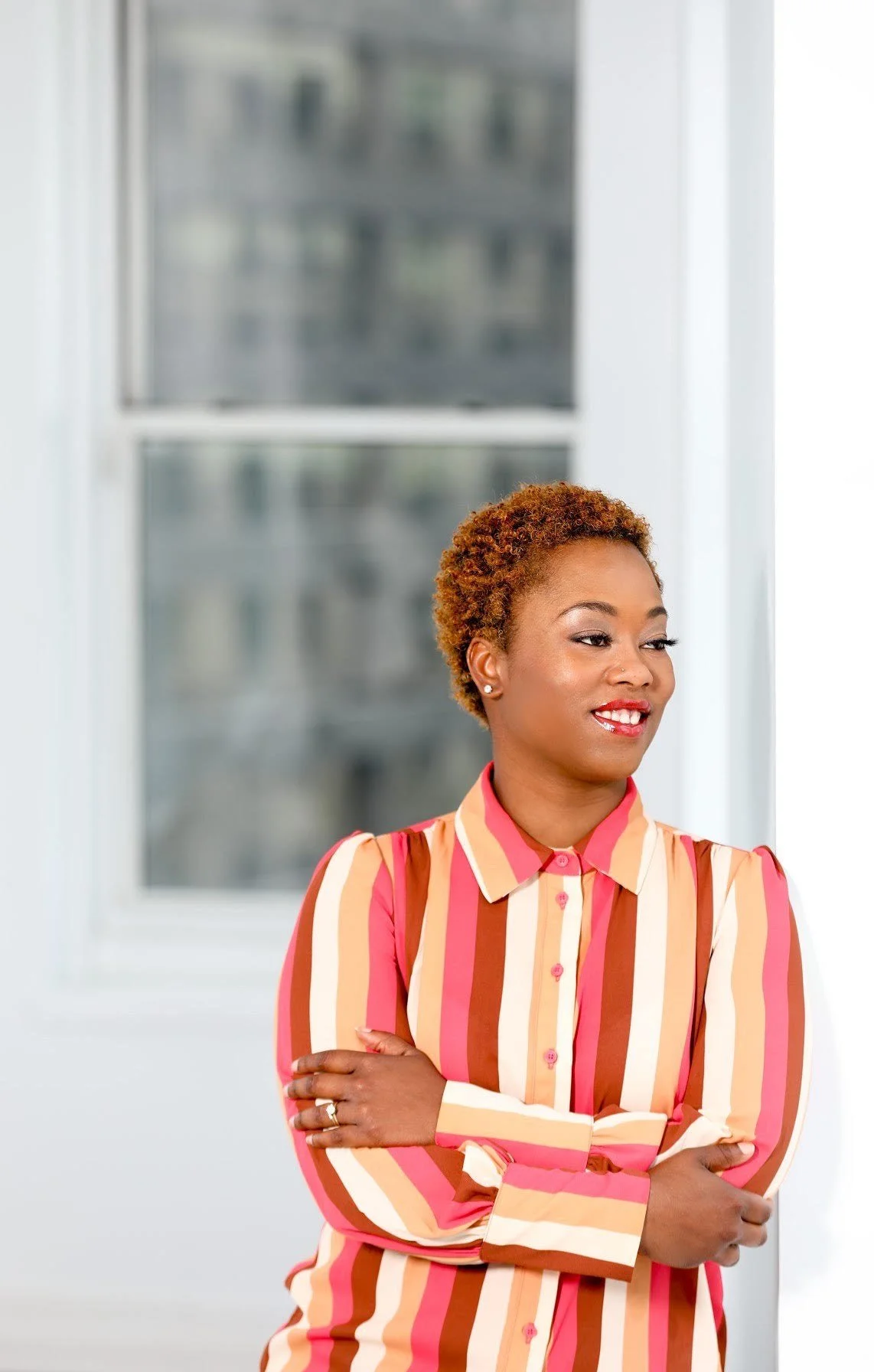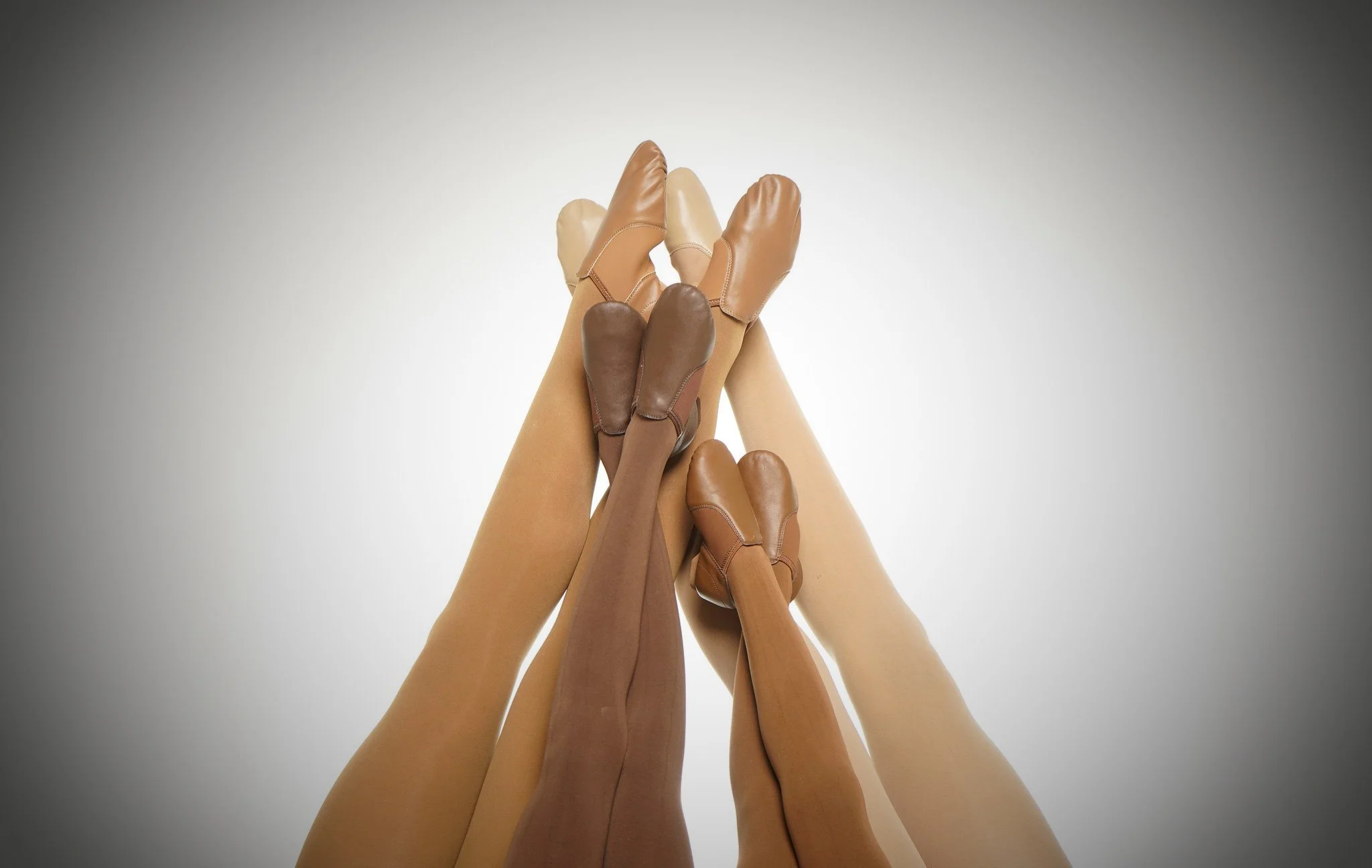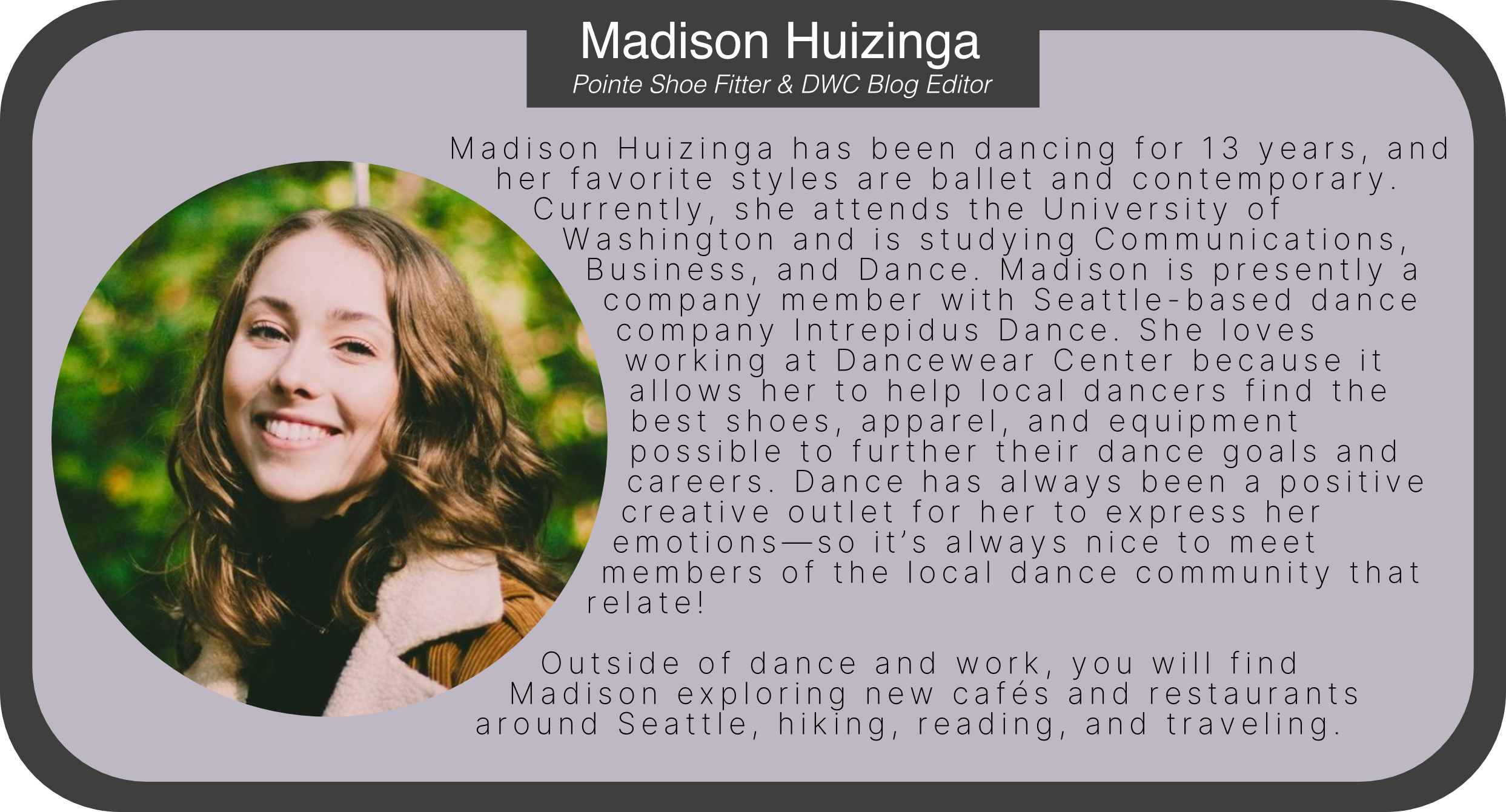Representation and Acceptance in the Dance World
Blendz Apparel’s Jamia Ramsey
By Madison Huizinga, DWC Blog Editor
It wasn’t until age 10 that Jamia Ramsey learned that tights are supposed to match the skin tone of the dancer that wears them. After auditioning, Jamia had earned a scholarship to dance at the Dance Theatre of Harlem in New York City. “It was there that I first learned that flesh-toned tights were supposed to match your skin tone,” she shares. Jamia learned about the process of dying tights and using makeup to “pancake” ballet and pointe shoes. Previously, she had only danced in pink and tan-colored tights, which are readily available at any dancewear retailer but don’t match her skin tone. “It was all about uniformity,” Jamia explains. It’s safe to say that this experience planted the seed for Jamia to create her visionary dancewear company Blendz Apparel: a brand that offers high-quality, flesh-toned dance apparel that all dancers can wear.
Jamia began dancing at age two when her mom put her in ballet and tap class. The art form had always played a big role in Jamia’s family, as her mother, sisters, and brother all danced. “It was something that was always near and dear to my heart,” Jamia shares. She continued dancing through middle school, high school, and college, participating in her studio’s company, winning various awards, attending summer intensives, and “fully immers[ing] into the dance world.”
After graduating college, Jamia dreamed of moving to New York to perform. However, due to expenses, she ultimately moved home to Atlanta and got a desk job at a logistics company. Jamia had always envisioned herself opening up a dance studio, but not until much later in life. Realizing that she was going to be in Atlanta for a long time, she figured now was a better time than ever to start.
Jamia started DanceMoves, a dance academy at a recreation center in Atlanta that served “underprivileged youth.” As Jamia did throughout her own dance journey, the dancers and their parents at DanceMoves went through “the grueling time and money consuming process of finding, spraying, and dyeing dancewear to match their complexions.” She found herself frustrated by the end products, as the tights and shoes never fully matched the dancers’ skin tones after all of the work they put into them. “It was just a headache,” Jamia says.
After doing some research online, Jamia found that other dancers and dance teachers were struggling with tights and shoes not matching their skin tones as well. Jamia also learned that after being asked to make wider shade ranges in their dance apparel, many large dancewear companies refused, claiming that there wasn’t a market for it.
Jamia realized that she had a “now or never opportunity.” “There was a void in the market...everyone deserves to be represented,” she says. “I just decided that...if no one’s going to do it… I can do it myself.” In 2017, Jamia officially started working on Blendz Apparel full-time.
Blendz Apparel offers stretch canvas and leather ballet shoes, jazz shoes, contemporary half-soles, and convertible tights in different flesh tones, including “Tenacious Tan,” “Maven Mahogany,” “Brazen Brown,” and “Confident Cocoa.” A percentage of each purchase at Blendz Apparel goes towards “The Valerie Grace Scholarship Fund” which assists young dancers with furthering their dance education at summer intensives and attending college. The scholarship is named after Jamia’s mother, as she and Jamia’s aunt helped fund her dance journey and supported her throughout her career. “They had a big love for dance and big hearts and I want to give back as well,” Jamia says. There will be an application process for people to apply for the scholarship.
For those looking to start their own business, Jamia advises them to “go ahead and get started… don’t wait.” “You’re not going to have every piece of the puzzle available and ready, but just put one foot in front of the other and you’ll figure it out along the way.”
Jamia hopes to see more inclusivity in the dance world, especially in ballet. She wants diverse dancers with different backgrounds to be embraced for their cultural differences so they aren’t forced to fit in a certain mold. Jamia wants dancers to be allowed to be unique and own their individualism. “I would like for more dance companies to embrace dancers of all hues and allow them to wear dancewear that matches their skin tone and best reflects them as a person,” she states. By working towards this, more dancers will be seen for their character and talent, rather than their skin color fitting a certain aesthetic.
Jamia believes that the “people at the top,” including artistic directors and dance teachers, must create policies that allow dancers to wear apparel that matches their skin tones and embrace their natural hair while dancing. She believes that after these changes are made by powerful decision-makers in the dance world, more and more dancers will begin to accept them. In addition, on an individual level, dancers need to voice to upper-level dance directors and teachers the changes they wish to see in the dance world to make them known.
“Having the [flesh-toned] dancewear already manufactured and pre-made [promotes] the idea that dance is for everyone and not just for a certain subset group,” Jamia shares about Blendz Apparel. “That’s how Blendz is going about trying to make our change in the world: by starting with the shades that are not represented in the market and expanding from there.” In doing so, Blendz strives to create a dance realm that welcomes “inclusion and comfort for every dancer everywhere.”



